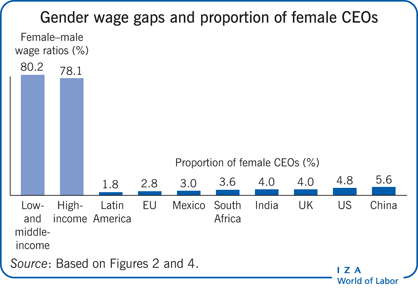Elevator pitch
Gender wage gaps and women’s underrepresentation in leadership positions exist at remarkably similar magnitudes across countries at all levels of income per capita. Women’s educational attainment and labor market participation have improved, but this has been insufficient to close the gaps. A combination of economic forces, cultural and social norms, discrimination, and unequal legal rights appear to be contributing to gender inequality. A range of policy options (such as quotas) have been implemented in some countries; some have been successful, whereas for others the effects are still unclear.

Key findings
Pros
Women’s educational attainment and labor market participation have improved in middle-income and, to a lesser extent, in low-income countries.
Women’s presence in professional, technical, and managerial roles and leadership positions in politics has increased in recent decades.
Increased female representation in government and corporate leadership can benefit women at lower ranks and help change perceptions about the role of women in society.
In recent years, several women have become CEOs of important companies, providing role models for other women.
Cons
Male–female wage differentials are large and persistent and do not automatically shrink with economic development.
Despite some gains, women remain severely underrepresented in top leadership positions in institutions and firms.
Gender gaps in wages and representation in managerial positions likely reflect an inefficient allocation of talent, with negative consequences for growth.
In many low- and middle-income countries, legal provisions exist that restrict women’s freedoms and opportunities.